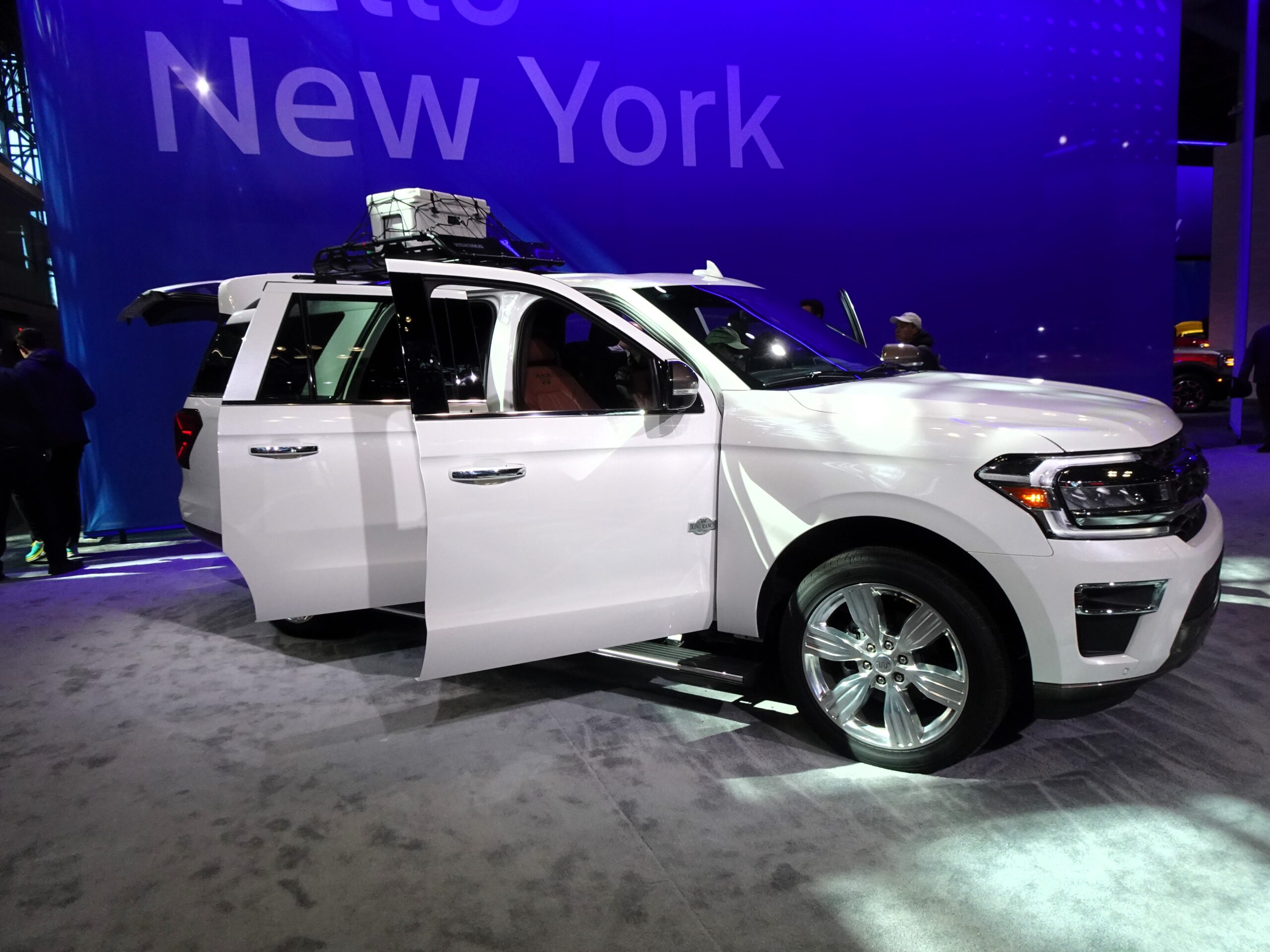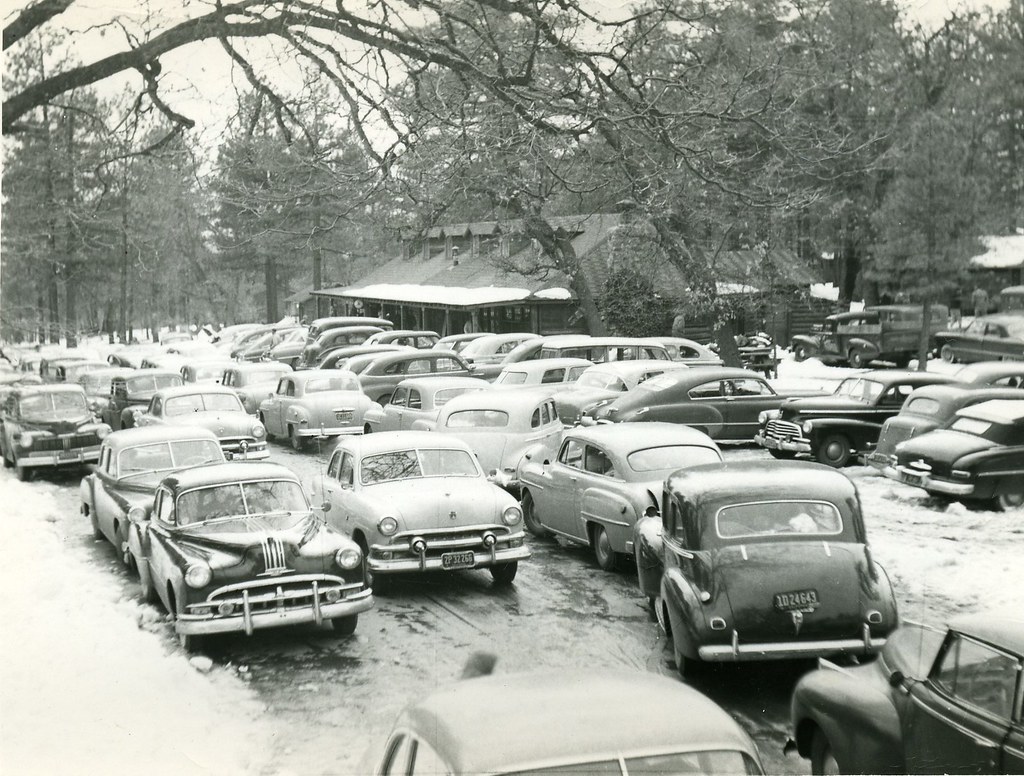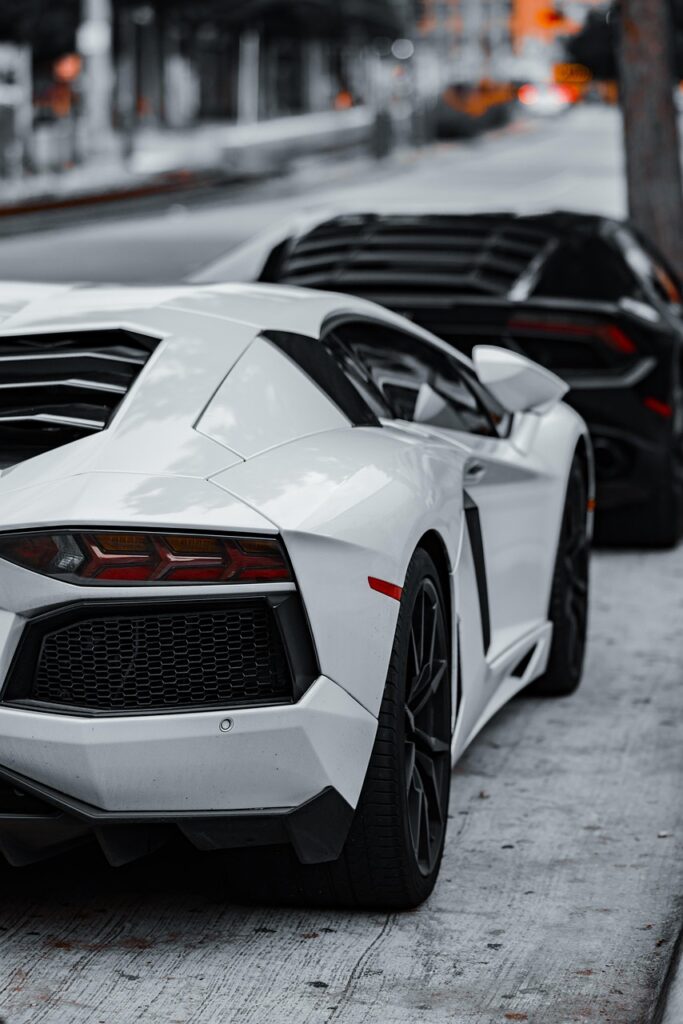
Once considered a pursuit for the eccentric enthusiast, classic car ownership has undergone a remarkable transformation, evolving into a legitimate and increasingly popular investment avenue. The allure isn’t just in the gleam of vintage chrome or the roar of a bygone engine; it’s in the robust financial returns these automotive assets are delivering, often outperforming traditional investment vehicles. With a finite number of examples ever produced, and many becoming rarer each passing year, the intrinsic value of investment-grade classics continues its ascent, making them a compelling choice for a diversified portfolio.
This burgeoning market has witnessed an enormous influx of interest over just the last half-decade, translating into substantial appreciation. Some classics have seen annual gains as high as 25%—a figure that dwarfs the S&P 500’s average annual return by a factor of 2.5. From a broader, long-term perspective, specific classic cars have delivered an astonishing 500% increase in value since the turn of the millennium. Such stability and reliability in returns have even spawned innovative financial platforms like TheCarCrowd, allowing enthusiasts to collectively invest in a single classic vehicle for shared profit.
Yet, the appeal extends far beyond mere financial metrics. Owning a classic car is an experience, a tangible asset you can appreciate, drive, and even take pride in preserving. It unlocks a unique community of like-minded individuals, united by a passion for these machines and their rich histories. While a $10,000 classic car might seem comparable to $10,000 in a bank account on paper, the joy of driving it to car shows, meet-ups, or weekend cruises offers a reward that currency alone cannot provide. However, it’s a nuanced investment, demanding careful consideration of both its enticing upsides and potential pitfalls.
Despite the significant financial potential, classic car investment comes with its own set of challenges and expenses that a prospective investor must navigate. One primary concern is the possibility of misrepresentation, where a vehicle might be falsely advertised regarding its year, trim level, or undisclosed issues like mechanical problems, non-original parts, or rust. Accurately predicting a classic car’s value a decade or two into the future is also inherently difficult, adding a layer of uncertainty to the long-term outlook.
Unlike static investment art that can simply be hung and left untouched, investment-grade classic cars demand ongoing care and significant financial outlay to maintain their value. This includes costs associated with long-term storage preparation or consistent maintenance, both internally and externally. For rare or exotic models, these expenses can escalate dramatically, requiring specially-trained mechanics and often involving difficult-to-source, high-cost replacement parts, further impacting the overall profitability of the investment.
Beyond maintenance, classic cars are also expensive to insure, frequently necessitating coverage from specialty insurance providers. These policies often come with specific conditions, such as limits on usage and mileage, requirements for a primary vehicle, and stipulations for indoor storage. Furthermore, securing a safe and appropriate location or facility to house your classic car will incur additional costs, especially if adequate garage space is not already available. These recurring expenses must be factored into the total cost of ownership.
It is crucial to understand that classic cars are fundamentally a long-term investment. This is not akin to flipping a used car for quick profit; rather, it entails holding onto the vehicle for several years, often decades, to allow its value to steadily appreciate. Consequently, classic cars are rarely suitable for short-term gains. Additionally, unlike more liquid assets such as stocks, your capital is tied up, requiring you to find a buyer or an auto equity loan should you need to liquidate. Finally, any profit realized from the appreciation of your classic car will be subject to capital gains tax, an important consideration for financial planning.
For those ready to embark on this journey, finding the right classic car is a deeply personal, yet strategically significant, endeavor. The most successful investors are often driven by genuine passion for a particular vehicle, recognizing that the sheer joy of ownership and the driving experience are paramount. While financial returns are a key motivator, the cost of ownership and upkeep can sometimes diminish or even negate profits, underscoring the importance of investing in a car that brings personal enjoyment. If you anticipate little pleasure from the ownership experience, the investment may not be worthwhile.
Where you source your classic car is equally critical to a successful investment. Options range from scanning classified ads, Craigslist, and eBay to engaging professional brokers who specialize in tracking down specific models. Online automotive auction sites like Bring a Trailer and Collecting Cars have become highly reputable platforms, as have established auction houses such as Mecum, Bonhams, and RM Sotheby’s. For certain rare models or those never sold domestically, importing a car from overseas can also present a fantastic opportunity to acquire an investment-grade classic.
Diligent research, or ‘doing your homework,’ is an indispensable step before any purchase. This involves thoroughly investigating the car’s history, understanding its different model variants, and researching its current and historical market values over the past one to two decades to project future appreciation trends. Engaging marque experts for independent, unbiased advice is also highly recommended. These specialists can provide invaluable insights into issues like parts availability and the presence of qualified mechanics for specific investment-grade classics, ensuring a well-informed decision.
Different examples of the same year, make, and model can exhibit vast differences in value, influenced by a myriad of factors. Originality is paramount; a car closer to its factory stock condition will always command a higher value. The extent and quality of any restoration work are critical, while modifications—even with upgraded aftermarket parts—or non-factory repaints almost always diminish value. ‘Matching numbers’ examples, retaining their original engine, gearbox, and frame with matching serial numbers, are the most prized. Similarly, specimens with early production numbers often attract higher valuations due to their historical significance.
Unsurprisingly, a vehicle’s rarity significantly influences its worth. Factors such as the total number of units produced, the presence of rare features like a sunroof, or its status as a limited-edition model or high-performance trim level all contribute to its scarcity and, consequently, its value. Indeed, rarity is a foundational component of what gives investment-grade classic cars their enduring market appeal and value.
Extensive documentation and records are invaluable assets for any classic car. A comprehensive history detailing ownership, competition, and servicing provides potential investors with objective insights into the vehicle’s care and maintenance over its lifespan, as well as any recurring issues. Retaining original items such as tool kits and owner’s manuals also significantly enhances an example’s value, confirming its authenticity and provenance.
Historical significance and innovation play a crucial role in a model’s valuation. Cars that pioneered new technologies, set performance benchmarks, or featured idiosyncratic engine configurations often fetch higher prices. Early generations of now-iconic models, such as the Ford Bronco or BMW M3, typically boast substantial valuations due to their groundbreaking status. While aesthetic appeal is subjective, vehicles with iconic designs penned by famous designers or coachbuilders tend to hold higher values, having successfully stood the test of time.
Competition history can exponentially increase a car’s worth, particularly if it was successfully campaigned in a historically significant or high-level motorsport series. Documented race wins or championship titles further bolster its value, as does association with a famous team or driver, or construction by an iconic race shop like Autodelta or Carroll Shelby. Finally, previous ownership by noteworthy celebrities, especially those with ties to motorsport like Steve McQueen or Paul Newman, can dramatically elevate a vehicle’s value. Similarly, appearances in film or television shows also contribute to significant appreciation, as does a low number of prior owners, often indicative of better care and originality.
Now, let’s explore some specific classic and vintage cars that have proven to be stellar investments, consistently appreciating in value over the last decade.
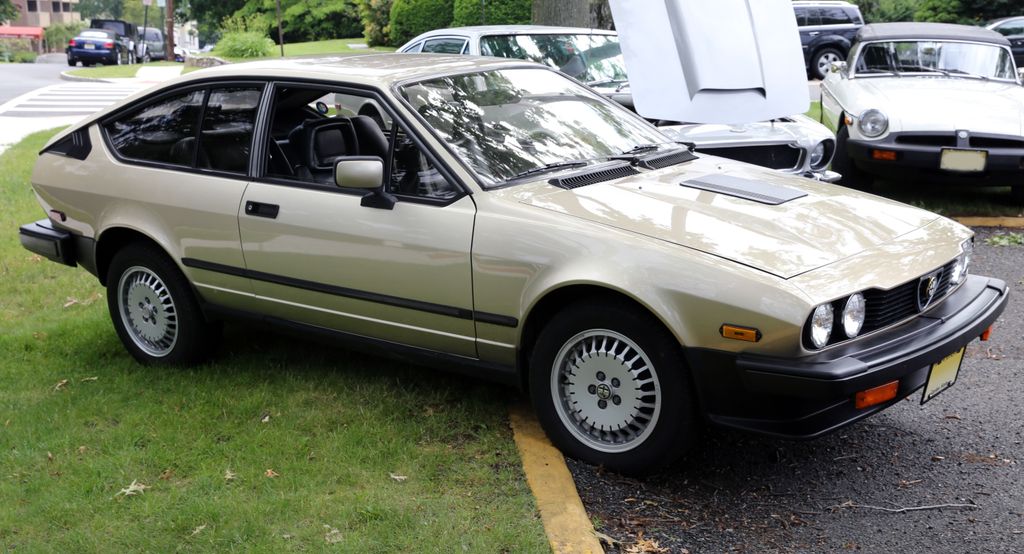
1. **Alfa Romeo GTV6**The Alfa Romeo GTV6, an Italian-designed coupe with an unmistakable 1980s aesthetic, is built upon the race-derived 116 type chassis, giving it an inherent sporting pedigree. Despite more than 20,000 units being produced during its run, this model has demonstrated a consistent and upward trajectory in value over recent years. This trend shows no signs of abatement, mirroring the broader appreciation seen across other vintage Alfa Romeo models in the collector market.
What makes the GTV6 particularly compelling for investors is its blend of performance heritage and distinct styling. Its V6 engine, often lauded for its characterful sound and spirited delivery, provides an engaging driving experience that resonates deeply with enthusiasts. This emotional connection, combined with its relative scarcity in pristine condition, fuels its steady climb in the investment hierarchy.
The desirability of models from 1981-1986 is particularly high, often sought after for their specific mechanical and aesthetic refinements within the production run. With a 2.5L V6 engine, the GTV6 offers a balance of classic Italian engineering and accessible performance. As vintage Alfas continue to gain traction, the GTV6 stands out as a solid, appreciating asset, appealing to both collectors and those looking for a tangible investment that offers driving pleasure.
Car Model Information: 2017 Cadillac XT5 Luxury
Name: Alfa Romeo Alfetta
Caption: 1978 Alfa Romeo Alfetta GTV 2.0
Manufacturer: Alfa Romeo
Production: 1972–1987
Assembly: Arese,Rosslyn, Gauteng
BodyStyle: Sedan (automobile)
Layout: Front-engine, rear-wheel-drive layout
Related: Alfa Romeo Giulietta (116),Alfa Romeo Alfa 6,Alfa Romeo 90
Categories: 1980s cars, Alfa Romeo vehicles, Articles with short description, CS1 Dutch-language sources (nl), CS1 French-language sources (fr)
Summary: The Alfa Romeo Alfetta (Type 116) is a front-engine, five-passenger saloon and fastback coupé manufactured and marketed by Italian automaker Alfa Romeo from 1972 to 1987 with a total of over 400,000 units produced during its production run.
The Alfetta was noted for the rear position of its transaxle (clutch and transmission) and its De Dion tube rear suspension — an arrangement designed to optimize handling by balancing front/rear weight distribution, as well as maintaining a low polar moment of inertia and low center of gravity. The interior of Coupé models featured a then unusual central tachometer placement — by itself, directly in front of the driver.
The Alfetta name, which means “little Alfa” in Italian is derived from the nickname of the Alfa Romeo Alfetta (Tipo 159), a successful Formula One car which in its last iteration introduced in 1951, paired a transaxle layout to De Dion tube rear suspension — like its modern namesake.
Get more information about: Alfa Romeo Alfetta
Buying a high-performing used car >>>
Brand: Alfa Romeo Model: GTV6
Price: $16,922 Mileage: 61,672 mi.
Read more about: Why We Still Adore Them: A Deep Dive into the Most Gloriously Awkward ’80s Cars That Were So Ugly, They Became Icons
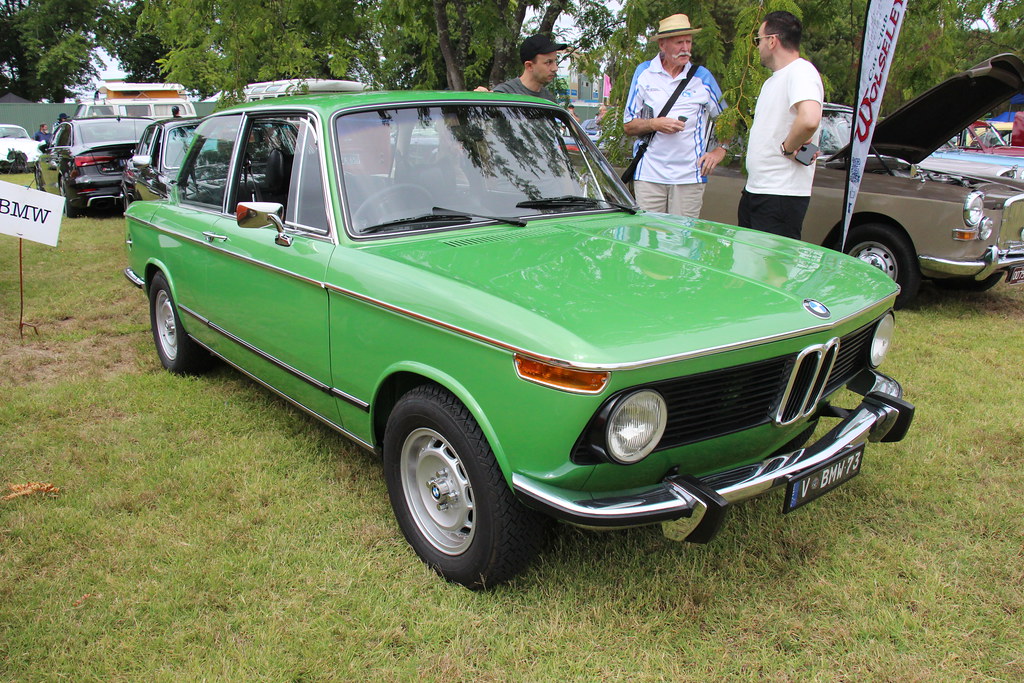
2. **BMW 2002**The BMW 2002, once an entry-level and widely affordable vintage ride, has steadily transformed into a coveted classic, with its value appreciating significantly over the last decade. Clean examples of this nimble German sedan now command prices ranging from $20,000 to $50,000, reflecting its growing status in the collector car market. Its name, derived from its 2.0-liter engine and two-door configuration, perfectly encapsulated its straightforward yet engaging design.
Every trim and year of the 2002 holds a certain appeal, testament to its enduring design and superb driving dynamics. However, certain variants stand out as exceptionally valuable. The rarer Targa, the practical yet potent 2000tii Touring, and especially the high-performance Turbo models are among the most sought-after. These limited-production or performance-oriented versions exemplify the peak of the 2002’s engineering and design.
A key differentiator for collectors lies in the production year, with examples built before 1974 considered more desirable. This preference stems from BMW’s switch to a square taillight setup in that year; the earlier round taillight models are often perceived as having a more classic and purer aesthetic. This detail significantly impacts their collector value, making them particularly attractive to discerning investors focused on originality and period-correct design.
Car Model Information: 1971 BMW 2002
Name: BMW 02 Series
Caption: BMW 1600-2
Production: 1966–1977,837,038 units
Assembly: Munich
Class: Compact executive car
BodyStyle: 2-door coupé , 2-door convertible , 3-door hatchback
Layout: Front-engine, rear-wheel-drive layout
Engine: ubl
Wheelbase: cvt
Length: cvt
Width: cvt
Height: cvt
Weight: cvt
Transmission: 4-speed manual , 5-speed manual ,3-speed automatic
Successor: BMW 3 Series (E21)
Designer: Giovanni Michelotti
Manufacturer: BMW
Categories: 1970s cars, Articles with short description, BMW vehicles, CS1 German-language sources (de), CS1 Italian-language sources (it)
Summary: The BMW 02 Series is a range of sporty compact executive cars produced by German automaker BMW between 1966 and 1977, based on a shortened version of the New Class Sedans.
The first 02 Series produced was the 1600-2 (later renamed 1602) in 1966. In 1975, the 02 Series was replaced by the E21 3 Series (except for the 1502 model, which continued until 1977).
Get more information about: BMW 02 Series
Buying a high-performing used car >>>
Brand: BMW Model: 2002
Price: $45,550 Mileage: 5,001 mi.
Read more about: Unearthing Hidden Performance: 14 Underrated Sports Cars That Defy Expectations for Today’s Performance Seekers
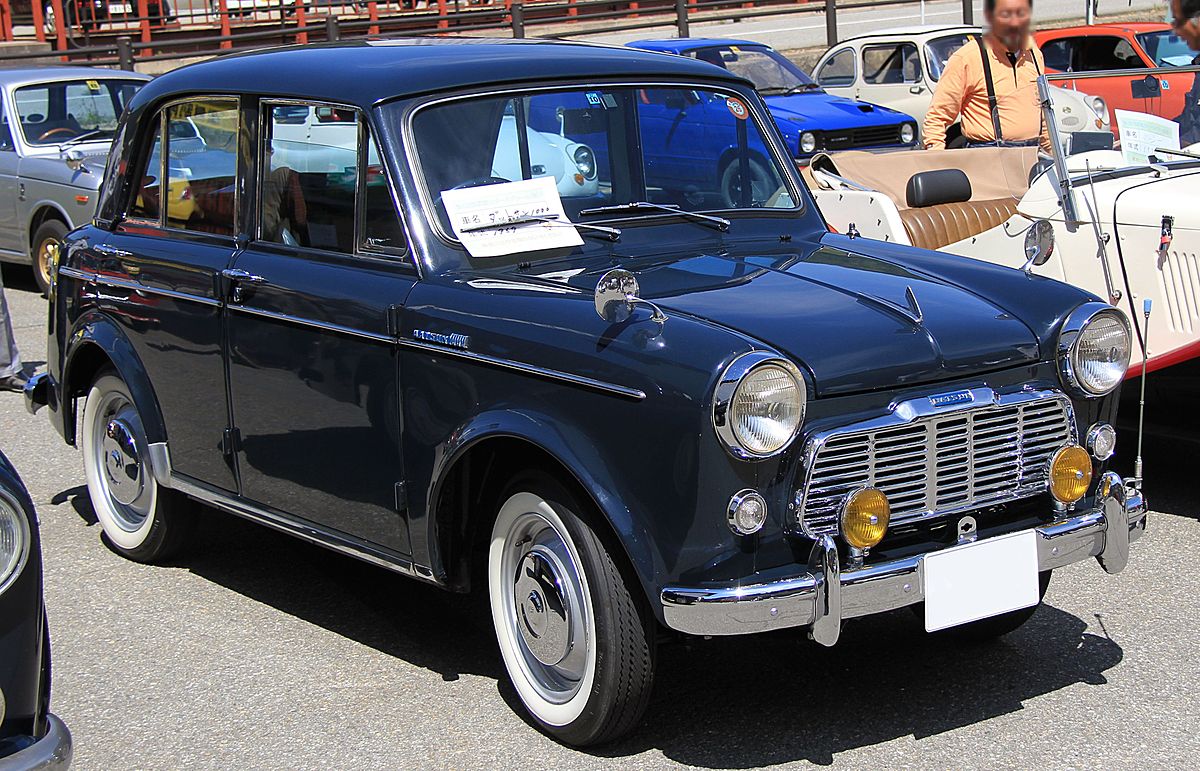
3. **Datsun 240/260/280Z**The Datsun Z lineup, comprising the 240Z, 260Z, and 280Z, has long been admired for its incredible vintage sports car performance, often earning the affectionate, albeit slightly dismissive, moniker of a “poor man’s Porsche 911.” However, these vehicles have transcended that label, steadily climbing in value despite being available at a relative bargain only a decade or two ago. They offer an exhilarating driving experience that rivals more expensive European counterparts.
What’s particularly interesting about the Z series is that all models, from the initial 240Z to the later 280Z, have demonstrated consistent appreciation. This broad appeal indicates a strong and sustained demand across the entire generation. Whether it’s the raw simplicity of the 240Z or the refined power of the 280Z, each variant offers unique characteristics that resonate with a diverse range of collectors.
Notably, even modified race-built Zs appear to retain their value remarkably well, which is an unusual characteristic in the classic car market where originality often dictates worth. This resilience in modified examples speaks to the robust engineering, inherent performance capabilities, and strong cult following that these cars command. The desirable years range from 1969 to 1978, with the 2.4L Straight-Six engine being a defining feature across the series, cementing their status as solid investments.
Car Model Information: 1972 Datsun 240Z
Name: Nissan Fairlady Z (Datsun 240Z, 260Z, and 280Z)
Aka: unbulleted list
Manufacturer: Nissan
Production: 1969–1978
Class: Sports car
Layout: Front-engine, rear-wheel-drive layout
Assembly: Hiratsuka, Kanagawa
BodyStyle: unbulleted list
Designer: Yoshihiko Matsuo
Predecessor: Datsun Sports
Successor: Nissan Fairlady Z (S130)
Caption: 1970–1973 Nissan Fairlady Z
Categories: 1970s cars, All Wikipedia articles written in American English, All articles with unsourced statements, Articles with short description, Articles with unsourced statements from February 2021
Summary: The Nissan S30, sold in Japan as the Nissan Fairlady Z but badged as the Datsun 240Z, 260Z, and 280Z for export, are 2-seat sports cars and 2+2 GT cars produced by Nissan from 1969 until 1978. The S30 was conceived of by Yutaka Katayama, the President of Nissan Motor Corporation U.S.A., and designed by a team led by Yoshihiko Matsuo, the head of Nissan’s Sports Car Styling Studio. It is the first car in Nissan’s Z series of sports cars.
The S30 had four-wheel independent suspension and a powerful straight-six engine with an overhead camshaft, features identified with far more expensive premium European sports cars and coupés such as the Jaguar E-Type and BMW 2800 CS, but absent from similarly priced sports cars such as the Alfa Romeo Spider, MGB and Opel GT, which had smaller four-cylinder engines and rear live axles. The S30’s styling, engineering, relatively low price, and impressive performance resonated with the public, received a positive response from both buyers and the motoring press, and immediately generated long waiting lists.
As a halo car, the S30 broadened the acceptance of Japanese carmakers beyond their image as producers of practical and reliable but prosaic and unfashionable economy cars. Datsun’s growing dealer network—compared to limited production imported sports cars manufactured by Jaguar, BMW, Porsche, Alfa Romeo, and Fiat—ensured both easy purchase and ready maintenance.
The S30 was initially sold alongside the smaller four-cylinder Datsun Sports, which was dropped from production in 1970. The S30 240Z is unrelated to the later 240SX, sold as the Silvia in Japan.
Get more information about: Nissan Fairlady Z (S30)
Buying a high-performing used car >>>
Brand: Datsun Model: 240Z
Price: $32,495 Mileage: 122,000 mi.
Read more about: Golden Years, Chrome Dreams: Unlocking the Hobby and Investment Potential of Classic Cars for Retirees

4. **International Harvester Scout (& Scout II)**For those who missed the boat on the original Ford Bronco, which has skyrocketed in value to become largely unobtainable for most enthusiasts, the International Harvester Scout and Scout II present a fantastic alternative. These vintage 4×4 models offer robust off-road capabilities and distinctive styling, and crucially, can still be acquired for a fair price, making them highly attractive investment candidates in the burgeoning classic SUV market.
The price spectrum for these rugged machines can vary significantly. Some well-preserved specimens can fetch as much as $80,000, reflecting their increasing desirability among collectors seeking authentic vintage off-roaders. Conversely, more accessible examples can still be found for as little as $10,000 to $15,000, offering a lower entry point for investors willing to embark on a restoration project.
Both the Scout and Scout II are also exceptional candidates for restomod off-road builds, combining classic aesthetics with modern performance and reliability. This versatility, coupled with their increasing rarity and growing enthusiast base, positions them as strong appreciating assets for the years 1961-1980. With various engine options including 2.5L i4, 3.2L i4, 3.8L i6, 4.4L V8, and 5.0L V8, there’s a Scout to fit diverse preferences and investment goals.
Car Model Information: 2017 Cadillac XT5 Luxury
Name: International Scout
Caption: 1978 Scout II wagon
Manufacturer: International Harvester
Production: 1961–1980
Class: Full-size,SUV
Assembly: Fort Wayne, Indiana
BodyStyle: SUV
Layout: Front-engine, rear-wheel-drive layout,rear-wheel drive
Categories: 1970s cars, 1980s cars, All-wheel-drive vehicles, All articles needing additional references, All articles with dead external links
Summary: The International Scout is an off-road vehicle produced by International Harvester from 1960 to 1980. Created as a competitor for the Jeep CJ, the Scout was the precursor of more sophisticated SUVs, including the Ford Bronco, Chevrolet Blazer, and the later Jeep Cherokee.
Produced for two generations, the Scout was designed as an open-top two-door truck as a base vehicle with options to configure it as a station wagon, half-cab pickup truck, or a soft-top convertible.
International Harvester assembled the model line in its facility in Fort Wayne, Indiana.
Get more information about: International Scout
Buying a high-performing used car >>>
Brand: International Harvester Model: Scout
Price: $16,922 Mileage: 61,672 mi.
Read more about: Cruising in These 14 Classic Trucks? Here’s What Road Enthusiasts Secretly Think About You.

5. **Land Rover Defender**The Land Rover Defender, an icon of rugged capability and timeless design, already sits in a fairly expensive bracket of classic vehicles. However, its price continues to climb year after year, solidifying its position as a truly fantastic investment vehicle. This consistent appreciation underscores its enduring appeal and status as a highly sought-after classic, particularly in global markets where its legendary off-road prowess is celebrated.
A significant opportunity within the Defender market lies in the availability of “basket-case” examples. These less-than-pristine vehicles can often be acquired for a more affordable initial outlay. Coupling these with the expertise of numerous restoration outfits specializing in vintage Defenders, it becomes evident how savvy investors can generate substantial profit by transforming a neglected specimen into a valuable, concourse-ready classic.
The desirable years for investment-grade Defenders typically span from 1983 to 1997, a period representing a sweet spot of classic styling and mechanical robustness. With engine options including 2.5L Petrol, Diesel, or Turbodiesel i4, and the more powerful 3.5L V8, there’s a range to suit different collector preferences. This combination of rising value, restoration potential, and an extensive support network makes the retro Defender a compelling choice for those with the initial budget to cover the overhead.
Car Model Information: 2017 Cadillac XT5 Luxury
Caption: 2015 Land Rover Defender 90 (Australia)
Name: Land Rover Defender
Manufacturer: ubl
Class: Small offroader
Aka: Land Rover 90, Ninety, 110, One Ten, One Two Seven (1983–1990)
Production: ubl
Predecessor: Land Rover Series III
Successor: Land Rover Defender (L663)
Assembly: Shah Alam,Kulim
Layout: Front-engine, four-wheel-drive layout,four-wheel drive
Categories: 1990s cars, 2000s cars, 2010s cars, All-wheel-drive vehicles, All Wikipedia articles written in British English
Summary: The Land Rover Defender (introduced as the Land Rover One Ten, joined in 1984 by the Land Rover Ninety, plus the extra-length Land Rover One Two Seven in 1985) is a series of British off-road cars and pickup trucks. They have four-wheel drive, and were developed in the 1980s from the Land Rover series which was launched at the Amsterdam Motor Show in April 1948. Following the 1989 introduction of the Land Rover Discovery, the term ‘Land Rover’ became the name of a broader marque, no longer the name of a specific model; thus in 1990 Land Rover renamed them as Defender 90 and Defender 110 and Defender 130 respectively.
The vehicle, a British equivalent of the Second World War derived (Willys) Jeep, gained a worldwide reputation for ruggedness and versatility. With a steel ladder chassis and an aluminium alloy bodywork, the Land Rover originally used detuned versions of Rover engines.
Though the Defender was not a new generation design, it incorporated significant changes compared to the Land Rover series, such as adopting coil springs front and rear. Coil springs offered both better ride quality and improved axle articulation. The addition of a centre differential to the transfer case gave the Defender permanent four-wheel-drive capability. Both changes were derived from the original Range Rover, and the interiors were also modernised. Whilst the engines were carried over from the Series III, a new series of modern and more powerful engines was progressively introduced.
Even when ignoring the series Land Rovers and perhaps ongoing licence products, the 90/110 and Defender models’ 33-year production run were ranked as the sixteenth longest single-generation car in history in 2020.
In 2020, Jaguar Land Rover introduced an all new generation of Land Rover Defender Land Rover Defender (L663) switching from body on chassis to integrated bodywork and from live, rigid axles to all around independent suspension.
Get more information about: Land Rover Defender
Buying a high-performing used car >>>
Brand: Land Rover Model: Defender
Price: $16,922 Mileage: 61,672 mi.
Read more about: The Unseen Terrors: How the Making of ‘Seven’ Challenged Hollywood and Its Stars, Including Morgan Freeman
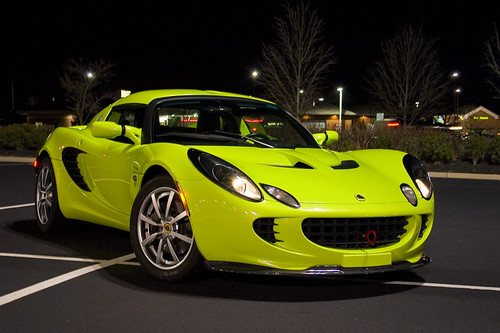
6. **Lotus Elise**The Lotus Elise stands as a testament to uncompromising engineering, designed with an almost singular focus on minimizing weight, perhaps more so than any other production car in history. This relentless pursuit of lightness resulted in a vehicle renowned for being one of the best-performing and best-handling sports cars of all time. Its incredible agility and direct feedback make it an absolute thrill to drive, offering a purity of experience that few modern cars can replicate.
This dedication to driving purity has made the Elise immensely popular among automotive enthusiasts who crave a genuine “true driver’s car.” The demand from this dedicated segment of collectors, who prioritize an unadulterated connection between driver and road, has in turn solidified the ultra-lightweight coupe’s status as a formidable investment vehicle. Its unique position in automotive history, coupled with its performance credentials, ensures its continued desirability.
The prime investment years for the Lotus Elise span from 1996 to 2011, encompassing both the initial Series 1 and Series 2 models, which are both highly regarded. Powered by a responsive 1.8L Inline-Four engine, the Elise delivers surprising performance given its diminutive size and weight. As an example of minimalist engineering achieving maximum driver engagement, the Lotus Elise represents a smart choice for investors seeking a classic that combines exceptional driving dynamics with strong appreciation potential.
Car Model Information: 2005 Lotus Elise
Caption: Lotus Elise S Club Racer (Series 3)
Name: Lotus Elise
Manufacturer: Lotus Cars
Production: 1996–2021,35,124 produced
Assembly: Hethel,Norfolk,England
Predecessor: Lotus Elan#Elan M100
Successor: Lotus Emira,Lotus Theory 1
Class: Sports car
BodyStyle: Targa top,Roadster (automobile)
Layout: Rear mid-engine, rear-wheel-drive layout
Platform: Lotus small car platform
Sp: uk
Categories: 2000s cars, 2010s cars, All Wikipedia articles written in British English, All articles with dead external links, All articles with unsourced statements
Summary: The Lotus Elise is a sports car conceived in early 1994 and released in September 1996 by the British manufacturer Lotus Cars. A two-seater roadster with a rear mid-engine, rear-wheel-drive layout, the Elise has a fibreglass body shell atop its bonded extruded aluminium chassis that provides a rigid platform for the suspension, while keeping weight and production costs to a minimum. The Elise was named after Elisa Artioli, the granddaughter of Romano Artioli who was chairman of Lotus and Bugatti at the time of the car’s launch.
Production of the Elise, Exige and Evora ended in 2021. It was replaced by the Lotus Emira.
Get more information about: Lotus Elise
Buying a high-performing used car >>>
Brand: Lotus Model: Elise
Price: $49,500 Mileage: 41,637 mi.
Read more about: Beyond the Redline: A MotorTrend Exploration of Earth’s Ultimate Speed Machines and Natural Wonders
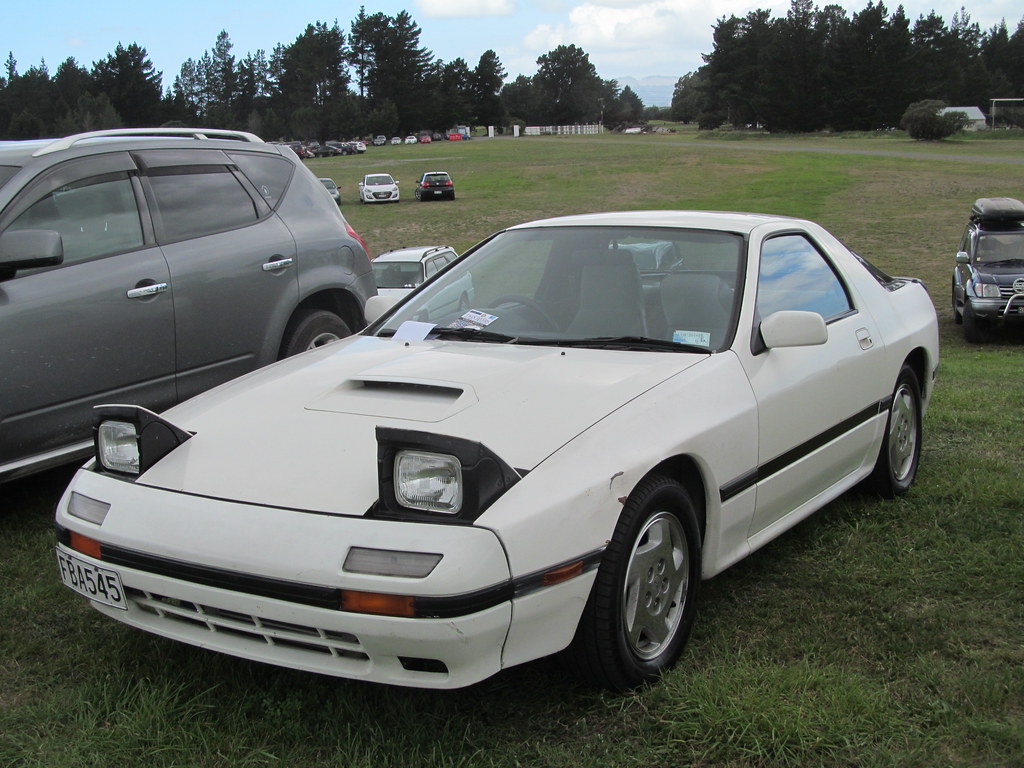
7. **Mazda RX-7**Japanese Domestic Market (JDM) cars have experienced a meteoric rise in popularity in recent times, and the Mazda RX-7 stands as a shining example of this trend. Clean examples of this iconic sports car are now routinely fetching prices close to $50,000, and their value continues to steadily increase, reflecting a surging collector interest in high-performance Japanese machinery. Its sleek, Japanese-designed bodywork gives it an undeniable presence that has aged remarkably well.
What truly sets the RX-7 apart is its unique Wankel rotary engine. This distinctive power plant, known for its high-revving nature and smooth power delivery, provides a driving experience unlike traditional piston engines. This mechanical individuality, combined with its striking aesthetics, positions the RX-7 as nothing short of a modern-day classic, appealing to enthusiasts who appreciate innovative engineering and a distinctive character.
The most desirable investment years for the Mazda RX-7 are broadly from 1985 to 1997, covering both the second-generation FC and third-generation FD models, with the latter often considered the pinnacle of its design and performance. With engine options including 1.1L, Turbocharged 1.1L, and 1.3L Wankel Rotary units, the RX-7 offers varying levels of performance and collectibility. As JDM classics continue their upward trajectory, the RX-7 remains a compelling and charismatic investment.
To successfully navigate the evolving classic car market, a strategic approach beyond basic acquisition is essential. This section covers advanced investment strategies, key market trends, and critical risk management, followed by the remaining seven exceptional classics poised for continued appreciation.
**Advanced Investment Strategies**
Optimize your classic portfolio. Focus on **Threshold Years**, vehicles nearing 25 or 30 years old for import advantages and classic status. Pre-purchase verification of manufacturing dates is critical for eligibility and value.
Prioritizing **Condition Over Project Cars** consistently yields superior returns. Well-maintained examples appreciate more reliably, avoiding unpredictable restoration costs. Buying the best condition vehicle affordable secures consistent value growth.
**Documentation Excellence** is paramount. Comprehensive history, including build records, ownership, and export preparation, enhances marketability and value. This transparency provides insights into care and establishes crucial provenance.
Leverage **Geographic Arbitrage** by capitalizing on regional price differences. Dry-state examples cut restoration costs. Currency fluctuations, like a weaker U.S. dollar, make international purchases or foreign sales more attractive, creating lucrative cross-border opportunities.
**Key Market Trends Driving Value**
The classic car market is shaped by dynamic trends. **Demographic Shifts** profoundly influence demand, with younger collectors (38% of the market) driving interest in “Radwood-era” 1980s-1990s and Japanese classics. This fuels explosive growth in specific segments.
**Regulatory Tailwinds** provide a favorable environment. The 25-year rule exempts pre-2000 models from U.S. import tariffs, and EU VAT reductions apply to vehicles over 30 years old. Emission exemptions simplify ownership, bolstering long-term appeal.
**Currency Advantages** create strategic entry and exit points. A weaker U.S. dollar, for instance, makes European classics more affordable for American buyers. Monitoring global economic dynamics is crucial for optimizing purchase and sale timing.
**Critical Risk Management**
Navigating market pitfalls requires rigorous due diligence. **Authentication and Verification** are non-negotiable. Meticulous matching numbers checks, paint analysis, and ownership history reviews are essential. Professional inspections provide unbiased assessments.
For **Protection Considerations**, secure agreed value insurance recognizing appreciation potential. Specialized coverage for restorations, international transport, and events is vital. Comprehensive protection safeguards your asset’s value throughout ownership.
Effective **Market Volatility Management** is key to long-term success. Diversify across marques and eras, adopt a long-term holding strategy, and regularly monitor market trends. Professional valuations help identify optimal selling windows, preserving portfolio value.
With these insights, let’s unveil the remaining seven classic cars poised for significant appreciation. These vehicles offer compelling investment opportunities, combining historical significance with strong market performance across diverse segments.
Car Model Information: 1991 Mazda RX-7
Name: Mazda RX-7
Caption: 1994 Mazda RX-7 R2 (FD3S)
Manufacturer: Mazda
Aka: Mazda Savanna RX-7 (Japan, 1978–1991),Mazda ɛ̃fini RX-7 (Japan, 1991–1997)
Class: Sports car
Production: 1978–2002,811,634 produced
Assembly: Hiroshima
Platform: Mazda F platform
Layout: Front-engine, rear-wheel-drive layout#Front mid-engine, rear-wheel-drive layout
Predecessor: Mazda RX-3
Successor: Mazda RX-8
Categories: 1980s cars, 1990s cars, 2000s cars, 24 Hours of Le Mans race cars, All articles needing additional references
Summary: The Mazda RX-7 is a front mid engine, rear-wheel-drive, rotary engine-powered sports car, manufactured and marketed by Mazda from 1978 to 2002 across three generations, all of which incorporated the use of a compact, lightweight Wankel rotary engine.
The first-generation RX-7, codenamed SA (early) and FB (late), is a two-seater two-door hatchback coupé. It featured a 12A carbureted rotary engine as well as the option for a 13B rotary engine with electronic fuel injection in later years. The second-generation RX-7, carrying the internal model code FC, was offered as a two-seater coupé with a 2+2 option available in some markets, as well as in a convertible body style. This was powered by the 13B rotary engine, offered in naturally aspirated or turbocharged forms. The third-generation RX-7, model code FD, was offered as a two-seater coupé with a 2+2 version offered as an option for the Japanese market. It featured a sequentially turbocharged 13B REW engine.
More than 800,000 RX-7s were manufactured over its lifetime.
Get more information about: Mazda RX-7
Buying a high-performing used car >>>
Brand: Mazda Model: RX-7
Price: $20,000 Mileage: 49,743 mi.
Read more about: Unearthing Hidden Performance: 14 Underrated Sports Cars That Defy Expectations for Today’s Performance Seekers
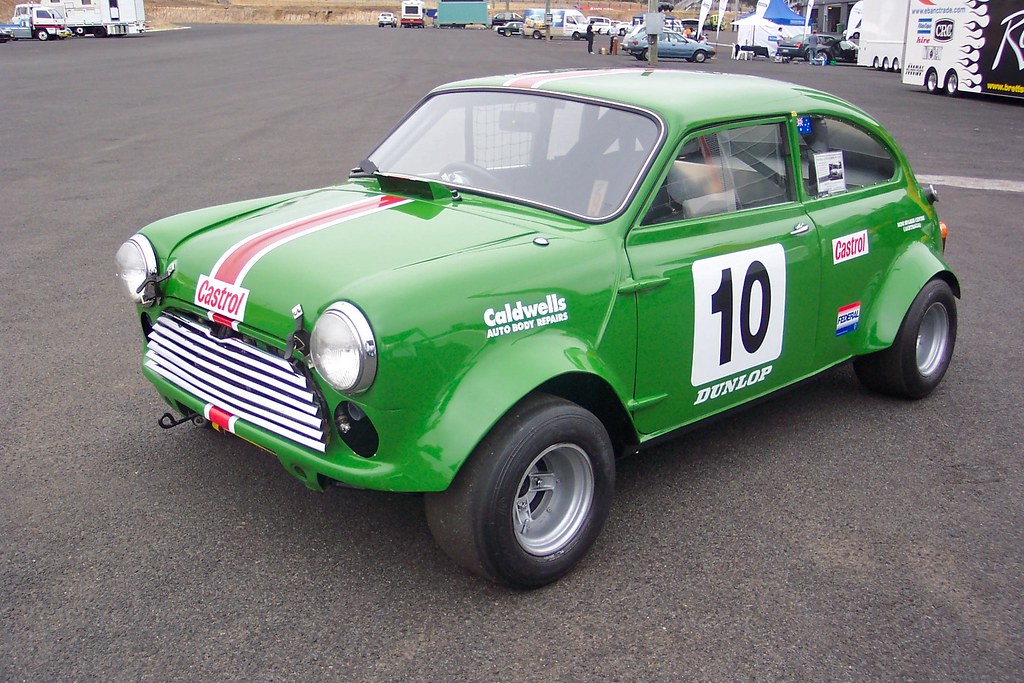
8. **Mini Cooper**A 1960s British icon, the original Mini Cooper transcended utility, embodying innovation and style. Produced for decades, its enduring design and engaging driving characteristics cemented its place in history. Its compact size revolutionized car design, earning a global following.
Investment appeal surged, fueled by the modern Mini’s popularity. This renewed interest translates into growing values for clean, well-preserved originals. Collectors recognize the charm, historical significance, and unique driving experience, driving sustained classic market demand.
Spanning 1959-2000, Mini Coopers offered diverse inline-four engines. This long history and varied specifications mean options for every budget. Its cultural icon status, combined with a robust enthusiast community, positions the Mini as a reliable, appreciating asset.
Car Model Information: 2012 MINI Cooper S Base
Sp: uk
Caption: 1959 Morris Mini-Minor (first one built)
Name: Mini
Aka: Austin 850,Rover Mini,Austin Cooper,Austin Mini,Austin Partner,Austin Seven,Innocenti Mini,Leyland Mini,Morris 850,Morris Mascot,Morris Mini Minor,Riley Elf,Wolseley 1000 (South Africa),Wolseley Hornet
Layout: Front-engine, front-wheel-drive layout
Manufacturer: British Motor Corporation,British Leyland,Rover Group
Production: 1959–2000 (5.38 million)
Class: City car
BodyStyle: sedan (car),convertible,Station wagon,sedan delivery,coupe utility
Engine: BMC A-series engine,Straight-four engine
Designer: Alec Issigonis,John Sheppard (car designer)
Transmission: 4-speed manual,AP automatic transmission,5-speed manual (optional extra on some later models)
Length: cvt,cvt,cvt
Width: cvt
Height: cvt
Weight: cvt
Wheelbase: cvt,cvt
Related: Mini Moke,Austin Metro,Innocenti Mini,Mini Wildgoose,Mini Marcos
Successor: Austin Metro,Mini Hatch
Assembly: Panmure, New Zealand
Categories: 1960s cars, 1970s cars, 1980s cars, 1990s cars, 2000s cars
Summary: The Mini is a very small two-door, four-seat car, produced for four decades over a single generation, with many names and variants, by the British Motor Corporation (BMC) and its successors British Leyland and the Rover Group, and finally (briefly) under BMW ownership. Minis were built as fastbacks, estates, convertibles, and various other body styles. Minus a brief 1990s hiatus, from 1959 into 2000, an estimated 5.38 million of all variations combined were built, and the Mini’s engines also powered another 2 million Mini Metros, though the Mini eventually outlasted its successor.
Initially, the Mini was marketed under the Austin and Morris names, as the Austin Seven and Morris Mini-Minor; the Austin Seven was renamed Austin Mini in 1962 and Mini became a marque in its own right in 1969. Retrospectively, the car is known as the “Classic Mini” to distinguish it from the modern MINI family of vehicles produced since 2001 by German carmaker BMW, who took ownership of the Mini name following the sale of Rover Group in 2000.
This distinctive two-door car was designed for BMC by Sir Alec Issigonis. Its space-saving transverse engine and front-wheel drive layout – allowing 80% of the area of the car’s floorpan to be used for passengers and luggage – influenced a generation of car makers. The front-wheel-drive, transverse-engine layout were used in many other “supermini” style car designs such as Honda N360 (1967), Nissan Cherry (1970), and Fiat 127 (1971). The layout was also adapted for larger subcompact designs. In 1999, the Mini was voted the second-most influential car of the 20th century, behind the Ford Model T, and ahead of the Citroën DS and Volkswagen Beetle. It is also considered an icon of 1960s British popular culture.
The Mini Mark I had three major UK updates: the Mark II, the Clubman, and the Mark III. Within these was a series of variations, including an estate car, a pick-up, a van, and the Mini Moke, a jeep-like buggy. The performance versions, the Mini Cooper and Cooper “S”, were successful as both race and rally cars, winning the Monte Carlo Rally in 1964, 1965, and 1967. The Mini was manufactured in England at the Longbridge plant in Birmingham located next to BMC’s headquarters and at the former Morris Motors plant at Cowley, as well as in Australia (Victoria Park/Zetland BMC Australia factory) and later also in Spain (Authi), Belgium, Italy (Innocenti, as the Innocenti Mini), Chile, Malta, Portugal, South Africa, Uruguay, Venezuela, and Yugoslavia (IMV). In 1980, British Leyland launched the Mini’s follow-up, the Austin Metro, however the Mini outlasted it and continued to be produced at Longbridge until October 2000.
Get more information about: Mini
Buying a high-performing used car >>>
Brand: Mini Model: Cooper
Price: $7,987 Mileage: 103,968 mi.
Read more about: Behind the Grease and Grime: 12 Cars That Make Mechanics Secretly Cheer (Or Curse) When You Roll In
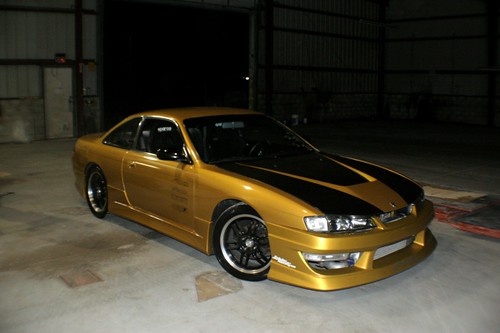
9. **Nissan 240SX**Successor to the 200SX S12, the 240SX became a sporty vintage Japanese hatchback across two generations (S13: 1989-1994; S14: 1994-1998). Its balanced chassis, rear-wheel-drive, and tunability made it a JDM performance staple and enthusiast favorite.
Both S13 and S14 models are popular collector cars, experiencing steady value climbs. This appreciation stems from the increasing scarcity of clean examples, many modified or raced. Its robust 2.4-liter inline-four provides a solid performance foundation, contributing to enduring appeal.
Clean examples typically range $10,000-$25,000, making it an accessible investment. Affordability, strong community support, and cultural significance within drifting scenes position the 240SX as an attractive entry point for tangible assets with appreciation potential.
Car Model Information: 1995 Nissan 240SX SE
Name: Nissan 240SX
Manufacturer: Nissan
Class: Sports car
Production: 1988–1998
Layout: FR layout
Caption: 1990 Nissan 240SX SE Hatchback (S13) in the USA.
Platform: Nissan S platform
Assembly: Kanda, Fukuoka
Related: Nissan Silvia,Nissan 180SX
Predecessor: Nissan Silvia#S12
ModelYears: 1989-1998
Categories: 1990s cars, All articles needing additional references, All articles to be expanded, All articles with unsourced statements, Articles needing additional references from June 2008
Summary: The Nissan 240SX is a sports compact car that was introduced to the North American market by Nissan in 1988 for the 1989 model year. It replaced the outgoing 200SX (S12) model. Most of the 240SXs were equipped with the 2.4-liter inline-four engine (KA24E from 1989 to 1990 and KA24DE from 1990 to 1998). The KA24E had a single overhead cam and the KA24DE had dual overhead cams. Two distinct generations of the 240SX, the S13 (1989–1994) the S14 (1994-1998) were produced, based on the Nissan S platform.
The 240SX is closely related to other S platform based vehicles, such as the Japanese-market Silvia and 180SX, and the European-market 200SX. Although their names are similar, the 240SX is unrelated to the 240Z or the 280ZX.
The 240SX is known for its popularity within drifting and tuner culture. However, due to the popularity of the S-chassis in drifting and related competitions, prices for vehicles and parts have greatly increased due to higher demand. This problem is sometimes known as “drift tax”.
Get more information about: Nissan 240SX
Buying a high-performing used car >>>
Brand: Nissan Model: 240SX
Price: $10,500 Mileage: 201,000 mi.
Read more about: Is the 2025 Mazda CX-50 the Best Compact SUV Bargain? A Detailed Consumer Reports Assessment
10. **Porsche 924/944**Once controversially dubbed “rebadged Volkswagens,” the Porsche 924 and 944 have seen a remarkable re-evaluation. This reflects a broader market trend where virtually all vintage Porsches, even “oddball” variants, now show significant appreciation and desirability among collectors.
Financially, these front-engined, water-cooled Porsches are compelling investments. Their sophisticated engineering, balanced handling, and distinct styling, once overlooked, are now highly prized. The 944, in particular, bridges classic 911s and modern offerings, providing accessible entry into Porsche collecting.
Spanning desirable years 1976-1991, they offered various inline-four engines. This diversity allows varied investment strategies, with rarer/higher-performance variants commanding premiums. As the vintage Porsche market ascends, the 924/944 prove overlooked models from a prestigious marque can yield exceptional returns.
Read more about: Golden Years, Chrome Dreams: Unlocking the Hobby and Investment Potential of Classic Cars for Retirees
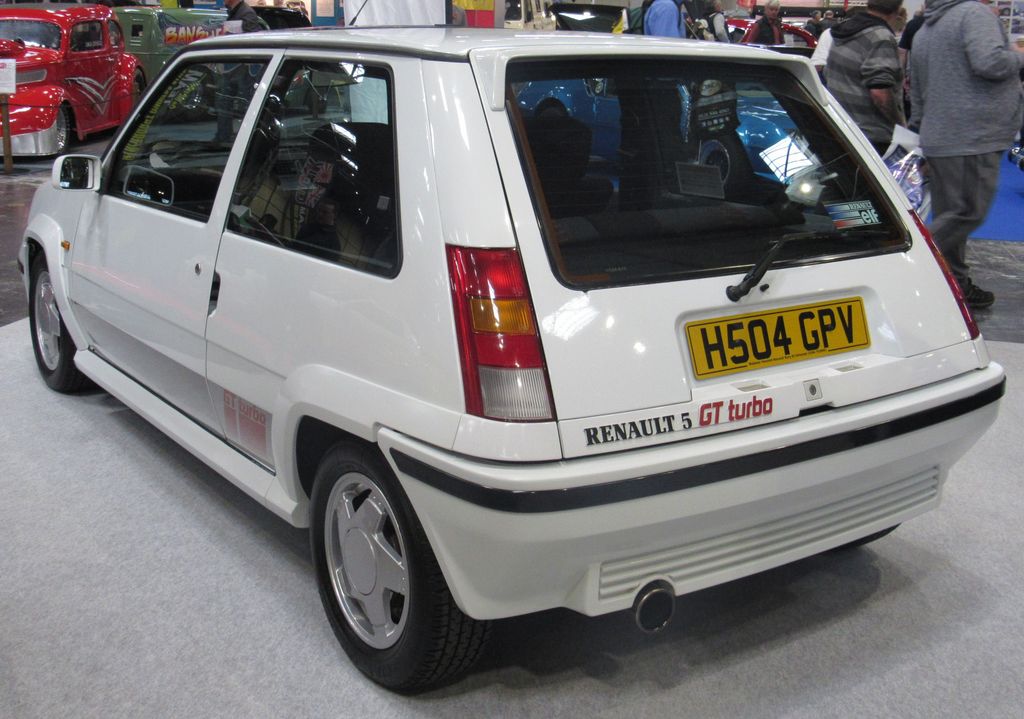
11. **Renault 5 GT Turbo**A Euro classic, the Renault 5 GT Turbo boasts rich motorsport lineage, homologated from an iconic Group B rally car. This connection grants it legendary status, making it thrilling to drive and a formidable investment. Its ultra-widebody aero kit and aggressive stance confirm its high-performance capabilities.
The 5 GT Turbo’s astonishing appreciation sets it apart. It might be the fastest-appreciating classic under six figures, seeing a 25% value increase last year alone. This meteoric rise underscores its burgeoning popularity, appealing to collectors valuing its direct link to motorsport and raw driving experience.
Desirable years 1980-1986, powered by turbocharged 1.4L or 1.5L inline-four engines. These, combined with lightweight construction and rally-bred chassis, deliver exhilarating performance. Its scarcity, iconic design, and rally heritage position it as a standout investment promising strong returns.
Car Model Information: 2019 Honda Civic EX
Name: Renault 5
Caption: Second generation R5
Manufacturer: Renault
Production: 1972–1996
Class: Supermini car
Successor: Renault Clio,Renault Twingo
Categories: 1980s cars, 1990s cars, Articles with French-language sources (fr), Articles with Spanish-language sources (es), Articles with short description
Summary: The Renault 5 is a five-passenger, three or five-door, front-engine, front-wheel drive hatchback supermini manufactured and marketed by the French automaker Renault over two generations: 1972–1985 (also called R5) and 1984–1996 (also called Super 5 or Supercinq).
The R5 was marketed in the United States and Canada as Le Car, from 1976 until 1983. Renault marketed a four-door sedan variant, the Renault 7, manufactured from 1974 until 1984 in Spain by Renault’s subsidiary FASA-Renault and exported to select markets.
The Renault 5 became the best-selling car in France from 1972 until 1986, with a total production exceeding 5.5 million over 14 years, making it France’s most popular car.
Get more information about: Renault 5
Buying a high-performing used car >>>
Brand: Renault Model: 5 GT Turbo
Price: $20,497 Mileage: 38,050 mi.
Read more about: The CVT Conundrum: 10 SUVs Graded on Transmission Reliability – From Bulletproof to Breakdown-Prone
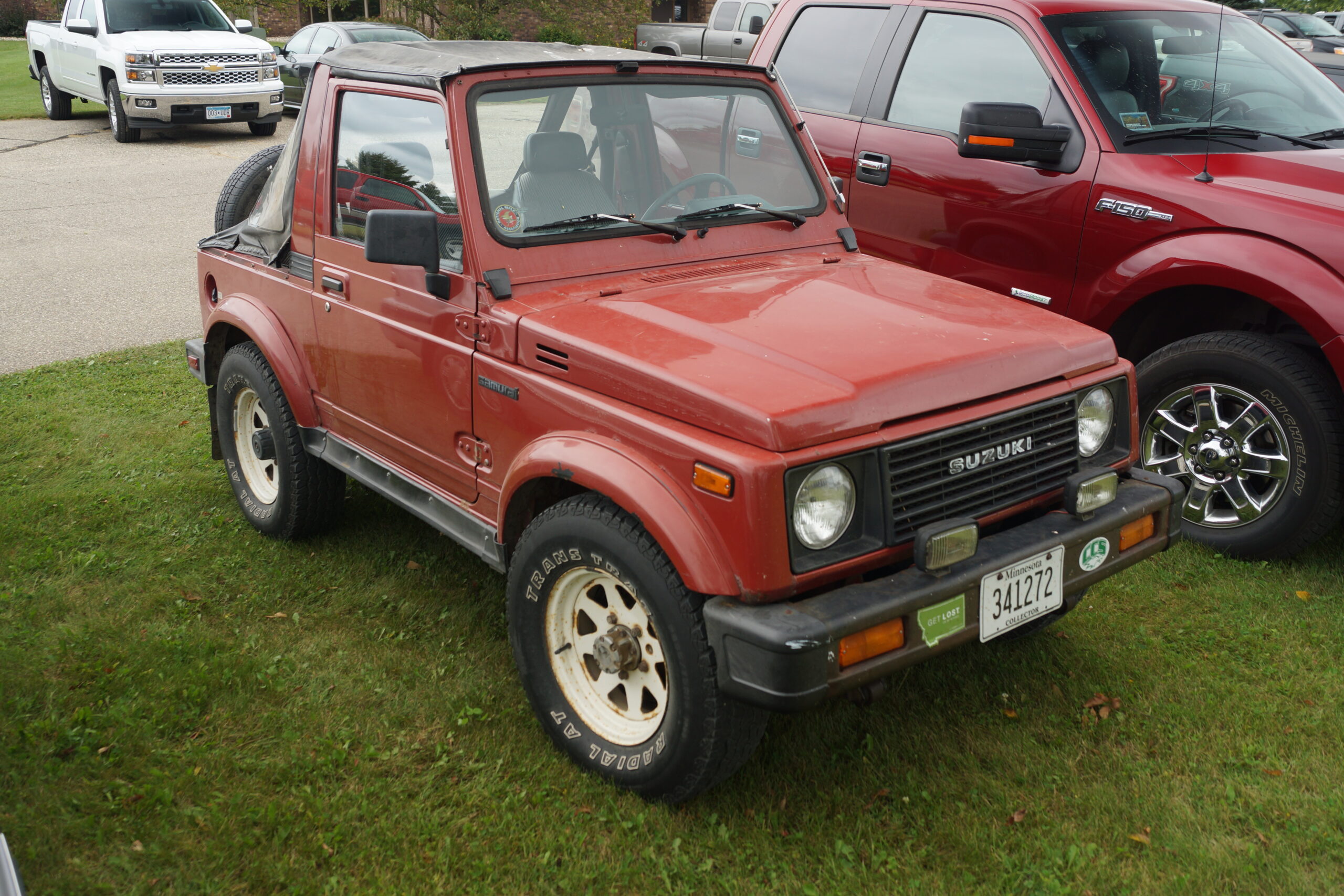
12. **Suzuki Samurai**Once a quirky, affordable 4×4, the Suzuki Samurai has quietly transformed into a sought-after collector car. Its unassuming charm, robust off-road capabilities, and compact dimensions have garnered a niche, dedicated following. Simplicity and reliability, long practical attributes, now drive its classic market appeal.
The Samurai’s accessibility is compelling for new investors. Averaging around $10,000, it presents a low entry barrier for a classic 4×4 collection. This affordability makes it ideal for entering the market without prohibitive costs, offering tangible asset ownership for modest outlay.
Desirable years 1985-1995, powered by a dependable 1.3L inline-four. Increasing rarity in unmolested condition, coupled with growing appreciation for utilitarian vintage off-roaders, ensures continued upward value. For fun, functional, and financially rewarding classics, the Samurai offers a unique, profitable opportunity.
Car Model Information: 1987 Suzuki Samurai
Name: Suzuki Jimny
Caption: 2019 Suzuki Jimny SZ5
Manufacturer: Suzuki
Production: April 1970 – present (2.85 million units sold by September 2018)
Class: Off-road vehicle,mini SUV
BodyStyle: SUV,van,convertible,pickup truck
Layout: Front-engine, rear-wheel-drive layout,Front-engine, four-wheel-drive layout
Chassis: Body-on-frame
Related: Maruti Gypsy
Categories: 1980s cars, 1990s cars, 2000s cars, 2010s cars, All Wikipedia articles written in British English
Summary: The Suzuki Jimny (Japanese: スズキ・ジムニー, Suzuki Jimunī) is a series of four-wheel drive off-road mini SUVs, manufactured and marketed by Japanese automaker Suzuki since 1970.
Originally belonging to the kei class, Japan’s light automobile tax/legal class, the company continues to market a kei-compliant version for the Japanese and global markets as the Jimny, as well as versions that exceed kei-class limitations. Suzuki has marketed 2.85 million Jimnys in 194 countries through September 2018.
Get more information about: Suzuki Jimny
Buying a high-performing used car >>>
Brand: Suzuki Model: Samurai
Price: $24,000 Mileage: 21,797 mi.
Read more about: Unearthing Hidden Gems: 13 Forgotten Hot Hatches from the ’70s, ’80s, and ’90s That Still Go Like Hell
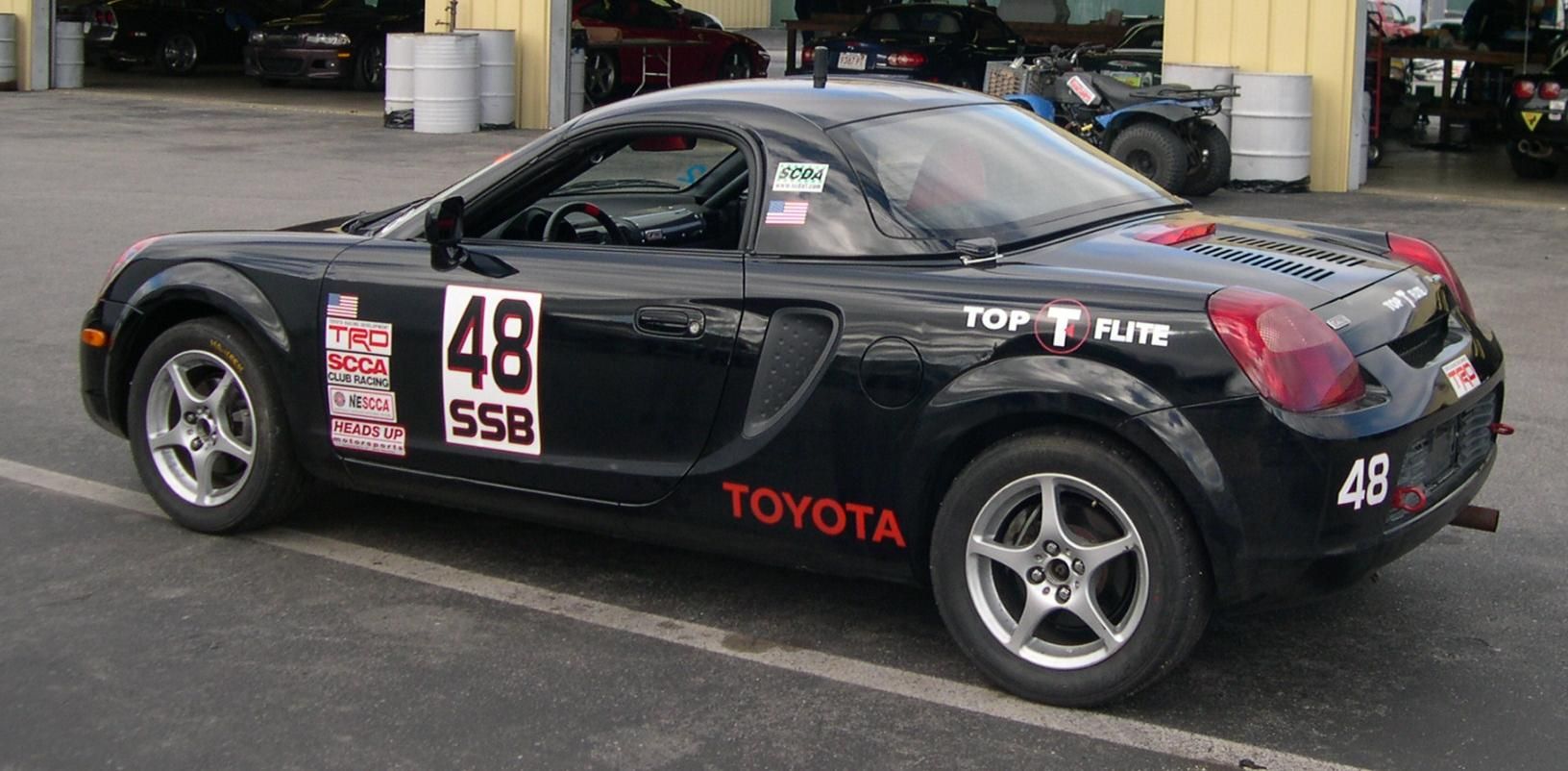
13. **Toyota MR2**Japan’s first rear mid-engined production car, the Toyota MR2 offered exotic dynamics at an accessible price. Produced in three generations, the first two (W10, W20) are most desirable for investment. Its agile handling, distinctive styling, and mid-engine layout provided a driving experience that defied its price tag.
The MR2 was extensively campaigned in motorsport by factory teams and privateer drivers. This racing pedigree adds significant historical and investment appeal, demonstrating its inherent engineering and performance. Consistent track presence solidifies its reputation as a true driver’s car.
Desirable years 1984-1999, the MR2 offered various inline-four engines, including supercharged. The purity of the first-gen W10 and refined second-gen W20 are highly sought. As JDM classics soar, the MR2 stands out as a unique and charismatic investment, blending exotic design, motorsport heritage, and proven appreciation.
Car Model Information: 1993 Toyota MR2 Turbo
Name: Toyota MR2
Caption: Second generation MR2
Manufacturer: Central Motors
Aka: Toyota MR (France and Belgium)
Production: 1984–2007
Assembly: Sagamihara, Kanagawa
Class: Sports car
Layout: Rear mid-engine, rear-wheel-drive layout
ModelYears: 1985–2007
Categories: 1990s cars, 2000s cars, All Wikipedia articles written in American English, All articles containing potentially dated statements, All articles needing additional references
Summary: The Toyota MR2 is a line of two-seater, mid-engined, rear-wheel-drive sports cars, manufactured in Japan and marketed globally by Toyota from 1984 until 2007 over three generations: W10 (1984–1989), W20 (1989–1999) and W30 (1999–2007). It is Japan’s first rear mid-engined production car.
Conceived as a small, economical and sporty car, the MR2 features a straight-four engine, transversely mounted in front of the rear axle, four-wheel disc brakes, and fully independent coilover suspension – MacPherson struts on each wheel.
The name MR2 stands for either “mid-ship run-about 2-seater” or “mid-engine, rear-wheel-drive, 2-seater”. In French-speaking markets, the vehicle was renamed Toyota MR because the abbreviation “MR2” sounds like the profanity “merdeux” when spoken in French.
Get more information about: Toyota MR2
Buying a high-performing used car >>>
Brand: Toyota Model: MR2
Price: $21,499 Mileage: 145,631 mi.
Read more about: Fake It Till You Make It: 14 Epic Kit Cars That Deliver Supercar Thrills on a Budget
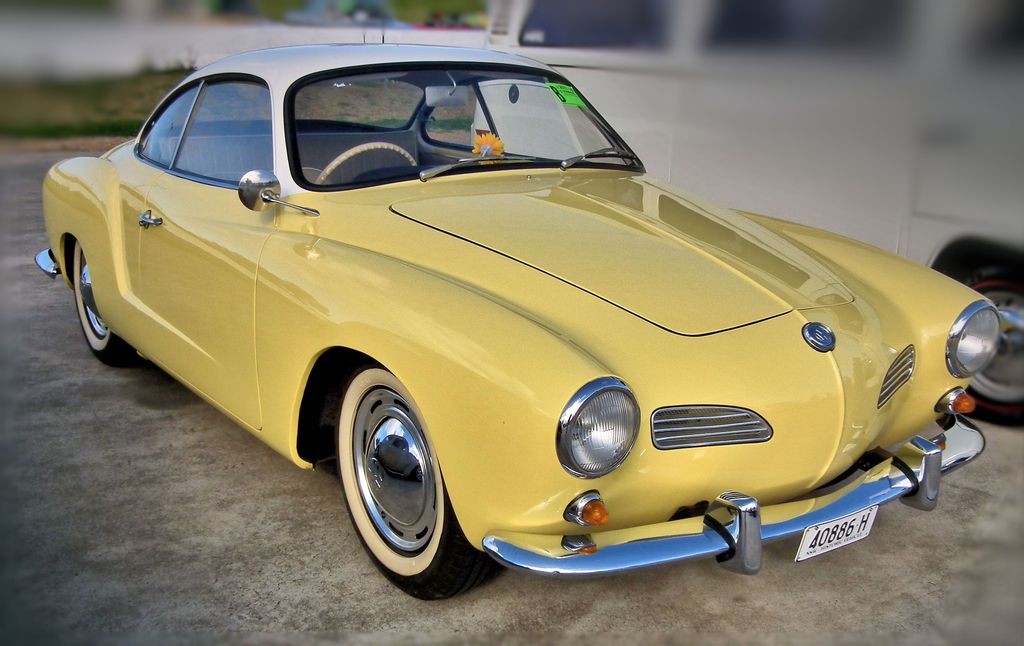
14. **Volkswagen Karmann Ghia**A stunning classic, the VW Karmann Ghia marries iconic European design with accessible mechanics, built on the Type 1 Beetle platform. Its elegant bodywork, penned by Carrozzeria Ghia and crafted by Karmann, fused Italian artistry and German engineering into timeless sophistication.
The Karmann Ghia’s appeal lies in strong future value appreciation and low entry cost. It offers an aesthetically pleasing classic for both investment growth and practical usability. Unlike many high-strung classics, it can be driven regularly, if maintained, without significantly diminishing value.
Desirable years 1955-1974, with reliable flat-four engines. Its unique blend of exquisite styling, mechanical simplicity, and road usability makes it a standout. As demand for visually distinctive yet practical classics grows, the Karmann Ghia is poised for continued, substantial appreciation, a smart addition to any collection.
Car Model Information: 2019 Honda Civic EX
Name: Volkswagen Types 14, 34, and 145
Caption: 1962 Type 14 VW Karmann Ghia
Manufacturer: Volkswagen
Production: Germany,Type 14: 1955–1974,Type 34: 1961/1962–1969,
445,238 total units built:,Coupé: 364,401 (Type 14 and 34),Cabriolet: 80,837 (all Type 14)
Brazil,Type 14: 1962–1971,TC (Touring Coupé): 1972–1975,
41,689 total units built:,Coupé: 23,393,Cabriolet: 177,TC (Touring Coupé): 18,119
Related: Volkswagen Beetle,Volkswagen Type 3,Puma (car manufacturer)#Volkswagen era
Class: Sports car
BodyStyle: convertible (car)
Engine: flat-4
Designer: Carrozzeria Ghia
Layout: RR layout
Successor: Porsche 914,Volkswagen Scirocco,Volkswagen SP2
Assembly: Osnabrück
Categories: 1960s cars, 1970s cars, All articles with unsourced statements, Articles with short description, Articles with unsourced statements from May 2023
Summary: The Volkswagen Karmann Ghia are a family of three overlapping sports car models produced by Volkswagen, marketed in 2+2 coupe (1955–1975) and 2+2 convertible (1957–1975) body styles, though German production ended one year before that in Brazil. Internally designated the Type 14 (1955–1975), the Type 34 (1962–1969), and the Type 145 TC (1972–1975; Brazil), the Karmann Ghia cars combined the floorpans and mechanicals of the Type 1 / Beetle or Type 3 ‘ponton’ models with styling by Italy’s Carrozzeria Ghia, and hand-built bodywork by German coachbuilding house Karmann.
The 1955 Type 14 Karmann Ghia was just the second Volkswagen passenger car ever produced, after the Beetle, and launched six years before the Type 3 notchbacks, fastbacks and Variants (squarebacks). They were faster and more expensive than the Beetle, but very cramped in the back, despite their wider, postwar and nearly slabsided body design. Two years later, in 1957, a convertible was added.
In 1961, the Karmann Ghia briefly lost its title of fastest Volkswagen, upon launch of the more powerful 1500cc Type 3 models, but later that year, Volkswagen, Ghia, and Karmann presented an all new Karmann Ghia – Type 34, using the Type 3’s floorpan and 1500cc powertrain. Made from 1962 to 1969, this had both new, more modern, angular and roomier bodywork; and a new, more luxurious interior, making it substantially more expensive than all other VW passenger cars. Additionally, the Type 34 was one of the world’s first cars with a power operated steel sunroof option. The Type 34 Karmann Ghia thus became VW’s range-topper again – costing up to twice the price of a Beetle – while the cheaper Type 14 remained in production. Only the latter offered a convertible.
Failure to offer the Type 34 in the United States – the Karmann Ghia’s most important market – combined with high pricing elsewhere likely contributed to limited sales, and after the type 14 also received the 1500cc engine in 1967, production of Type 34s was ended during 1969. Volkswagen of Brazil nevertheless looked for an alternative in its market segment, and so Carrozzeria Ghia was again commissioned, to design a third Karmann Ghia model, for the South American market, the Karmann Ghia TC (Touring Coupé), made in Brazil from 1972–1975. The result was a stylish, rakish fastback that offered good interior space for a 2+2 car.
For its final model year, the vestigial rear seat in the Type 14 was discontinued for North American models, as it lacked provisions for seat belts; all Karmann Ghias for 1974 were marketed strictly as two-seaters.
More than 445,000 Karmann Ghias were produced in Germany over the car’s production life, not including the Type 34 variant. Volkswagen do Brasil (Volkswagen Brasil) produced 41,600 Type 34s in Brazil for South America between 1962 and 1975.
Long noted for its exterior styling, the Karmann Ghia was designed with input from numerous individuals at Carrozzeria Ghia and was strongly influenced by Virgil Exner’s work, though all of its designers passed without a definitive individual styling attribution.
Get more information about: Volkswagen Karmann Ghia
Buying a high-performing used car >>>
Brand: Volkswagen Model: Karmann Ghia
Price: $20,497 Mileage: 38,050 mi.
Read more about: Unearthing the Automotive Ghosts: 14 Forgotten Two-Seater Sports Cars That Demand Your Attention
The classic car market has transformed into a sophisticated investment arena, demanding strategic insight. The blend of appreciating assets, inherent joy of ownership, and distinct community fosters unparalleled investment. With new generations discovering vintage machinery, coupled with favorable regulatory shifts and dynamic market trends, classic car investment’s future looks bright. Whether drawn to a rally-bred Renault 5 GT Turbo or a timeless VW Karmann Ghia, opportunities for financial gain and personal satisfaction are immense. Investing in these automotive treasures is more than a transaction; it’s an embrace of history, engineering, and a captivating lifestyle.


